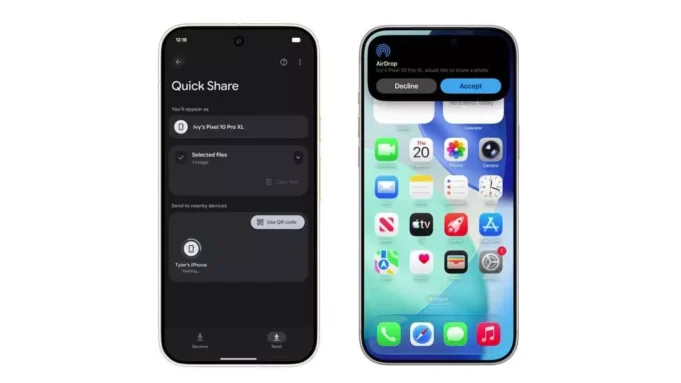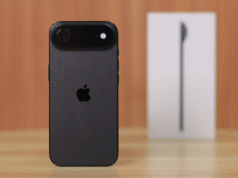The barriers between the Android and iOS ecosystems have been lowered as Google announces that its Quick Share feature will now seamlessly interact with Apple’s AirDrop, enabling file sharing between Android devices and iPhones, iPads, and Macs. The implications for cross-platform collaboration, and potentially competition, are significant.
For years, Apple’s walled garden approach has presented challenges for those straddling both worlds. AirDrop, a cornerstone of that ecosystem, has been a particularly sore point for Android users. Now, Google is claiming to have single-handedly built a bridge, without Apple’s assistance, promising frictionless file transfers for all.
The update, initially rolling out with the Pixel 10 series, essentially allows Android devices to “speak the same language” as AirDrop. This means sending photos, documents, and other files from your new Pixel to your friend’s iPhone will be as easy as sending via AirDrop.
According to Google’s announcement, the process is surprisingly simple. On the Android side, users will utilize the familiar Quick Share interface. iPhone users need only set their AirDrop visibility to “Everyone,” and the Android device will appear as a sharing option. The transfer then proceeds using AirDrop on the receiving iOS device.
How It Works in Practice
Here’s a quick rundown of how the file transfer process will work:
- Android user selects
Share
and chooses Quick Share. - iPhone user sets AirDrop visibility to
Everyone.
- Android device detects the iPhone.
- File is transferred via AirDrop.
Perhaps the most surprising aspect of this development is that Google accomplished this feat independently. As Google spokesperson Alex Moriconi confirmed to The Verge, “We accomplished this through our own implementation.” This suggests a deep understanding of Apple’s proprietary protocol and a determination to overcome interoperability hurdles.
Despite this solo effort, Google remains open to future collaboration with Apple, stating, “We always welcome collaboration opportunities to address interoperability issues between iOS and Android.” This hints at the potential for even more seamless cross-platform experiences down the line.
Naturally, questions about security have surfaced. Can Google really mimic AirDrop’s security protocols without creating vulnerabilities? Google insists it has left no stone unturned.
In a detailed security blog post, the company stated, “This feature does not use a workaround; the connection is direct and peer-to-peer, meaning your data is never routed through a server, shared content is never logged, and no extra data is shared.” This reassurance aims to quell any fears of privacy breaches or data interception.
As of now, Apple has remained conspicuously silent on Google’s AirDrop compatibility announcement. This silence speaks volumes, leaving many to wonder about Apple’s long-term strategy regarding cross-platform file sharing.
It also remains to be seen how quickly other Android manufacturers will adopt Google’s upgraded Quick Share technology. The success of this initiative hinges on widespread adoption across the Android ecosystem.
Ultimately, Google’s move represents a significant step toward a more open and interconnected mobile world. By breaking down the barriers between Android and iOS, Google is empowering users with greater flexibility and choice, potentially sparking a new era of cross-platform innovation. The days of “Sorry, I can’t AirDrop that to you” may finally be coming to an end.




